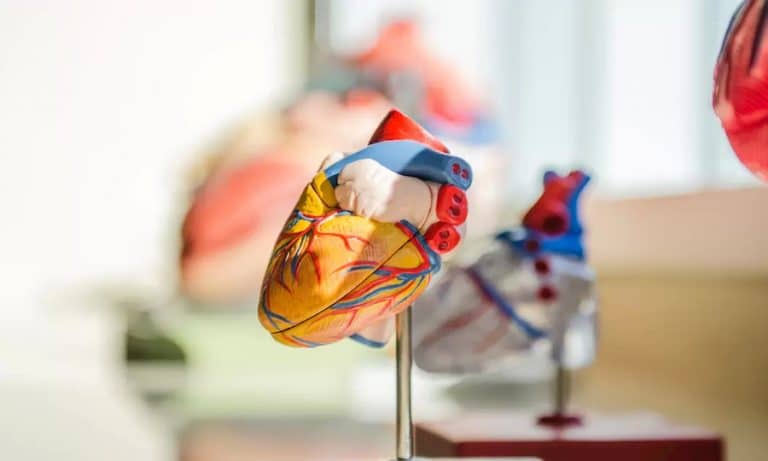48 Life-Saving Organ Donation Statistics & Facts for 2024

Organ donation saves millions of lives, and it will save even more if we are consistently given accurate organ donation statistics. Countless misconceptions and myths surround the process of organ donation, which holds people back from registering as donors. Because of this, the number of needed organ donations exceeds that of available donated organs.
Top 10 Organ Donation Statistics for 2024
- Data on organ donation proves that a single donor can save up to eight lives.
- Organ donation statistics from 2020 reveal that 39,000 transplants have been performed.
- Some countries have reported a 50% reduction in transplantations due to the COVID-19 pandemic.
- A kidney from a living donor lasts for 15–20 years, based on living organ donation facts.
- It’s estimated that more than 50,000 people need a heart transplant.
- Over 107,000 people are registered on the national organ transplant waiting list.
- There have been over 35,000 bone marrow donations without a single donor death.
- There are 35 million blind people globally, of whom most could be cured with an eye donation.
- Egg donors can be compensated $10,000–$12,000, based on stats on organ donation.
- There’s an 85% chance that the embryos transplanted into the uterus will implant properly.
Noteworthy Organ Donation Statistics
The number of people on the waiting list is continuously growing, and, unfortunately, it tops the number of available donors. The section below provides the most crucial stats and facts on organ donation.
[visualizer id=”97461″]
1. Worldwide, more than 145,000 organs are transplanted every year.
(Statista)
Organ donation statistics worldwide uncover that most of them are kidney transplants (95,479). Liver transplants are the second most common type, with 34,074 transplants performed a year. Finally, there are 8,311 heart transplants, 6,475 lung transplants, and 2,338 pancreas transplants.
2. Every ten minutes, another person is added to the organ transplant waiting list.
(UCI Health)
The number of people on the waiting list is growing all the time. Organ donation waiting list statistics suggest that one person is added to this list every ten minutes. Even though the number of new donors is also rising, the number of people on the organ transplant waiting list exceeds the number of available donors and the number of performed transplantation procedures.
3. Over 107,000 people are registered on the national organ transplant waiting list.
(Organ Donor)
More than 107,000 people are waiting for an organ transplant. This number includes men, women, and children of every age and ethnicity as of February 2021. Most of these people are aged 50–64, organ donation statistics remark.
4. Data on organ donation proves that a single donor can save up to eight lives.
(Donate Life America)
One person can donate their heart, lungs, liver, kidneys, pancreas, and intestines for organ transplantation. In addition to this, organ transplant facts uncover that cornea donation could give two people the gift of sight back, and tissue donation could change the lives of as many as 75 people in need.
5. Organ donation statistics from 2020 reveal that 39,000 transplants were performed that year.
(Organ Donor)
About 39,000 organ transplantation surgeries were performed in 2020, with many matching a donor of a different ethnicity than that of the recipient. Note that the same ethnicity isn’t a key factor for matching donors and recipients.
6. Some countries have reported a 50% reduction in transplantations due to the COVID-19 pandemic.
(Kidney International)
The organ donation statistics worldwide for 2020 painted a grim picture. The pandemic has affected everything, including organ donation and transplantation in countries with high infection rates. Namely, the US, France, and the UK report 50% lower transplantation rates.
7. A person who has had COVID-19 can be an organ donor 28 days after the recovery.
(Life Source)
People with active COVID-19 infection cannot be organ donors. Be that as it may, according to organ donor facts, they can apply to become an organ donor 28 days after their recovery. Of course, there are additional requirements. Namely, two tests are to come back negative with no symptoms surfacing.
8. COVID-19 vaccines are said to be safe for organ transplant recipients.
(Biopharma)
John Hopkins Medicine research studied organ transplant recipients’ reaction to COVID-19 vaccines (Pfizer/BioNTech mRNA). Of the study participants, 52% were kidney, 19% liver, 14% heart, 9% lung, 3% kidney and pancreas, and 6% other multi-organ recipients. In conclusion, the findings suggested that these vaccines can be safely given to organ transplant recipients.
Liver Transplant Facts and Statistics
Astoundingly, about 40%–60% of the donor’s liver is removed during surgery. Statistics also uncover that the average duration of hospital stay for the donor and recipient is seven days. As for the recovery, it takes between six to twelve months for the recipient and around two months for the donor. Read the following section to find out more.
9. In the US, approximately 8,000 liver transplants are performed every year, transplant stats affirm.
(Healthline)
That said, doctors usually recommend a liver transplant around the end-stage of liver disease. According to facts on organ donation, if all possible liver disease treatments are ineffective, the patient might die without a transplant.
10. Nearly 90% of people who’ve had a liver transplant are still alive one year after the surgery.
(Web MD)
The survival rate depends on a few factors, including the condition that caused liver failure. Fortunately, 88% of people who’ve had a liver transplant are still alive a year after the surgery. However, the survival rate decreases with time. As a matter of fact, according to liver transplant statistics, approximately 73% are alive five years after the surgery.
11. Close to 15,000 people were registered on the liver transplant waiting list in 2014.
(AGG)
Organ transplant statistics remark that, In 2014, an astounding 15,000 people were on the liver transplant waiting list, yet only 7,200 transplants were performed that year. That is primarily because people on the waiting list couldn’t find a liver transplant. Generally, that is the issue faced by at least 10% of those waiting for a liver transplant.
12. Post-surgical recovery takes between three and six months.
(LHMC)
In the first 45 days, doctors remove the staples from your incision area along with drainage and bile tubes. In two months, you’re allowed to lift up to 15 pounds. Then, in three months, you can start jogging. Finally, in three to six months, your incision heals, and you are allowed to go back to work.
Kidney Transplant Statistics and Facts
Of 121,678 people on the waiting list for an organ transplant, 100,791 are waiting for a kidney transplant. Interestingly, the median wait time for a person’s first kidney transplant is about 3.6 years, depending on health, availability, and organs’ compatibility. Dive in to discover more.
13. Kidney failure, a major reason for needing a kidney transplant, is caused by several medical conditions.
(Cleveland Clinic)
Some medical conditions like diabetes, high blood pressure, or chronic kidney disease can lead to kidney failure. Transplant facts affirm that kidney transplantation is the only solution in the final stages of kidney disease.
14. Kidney donors can range from newborns to seniors.
(Kidney)
The National Organ Procurement and Transplantation Network (OPTN) matches the recipients to available donor organs in its national computer registry. Interestingly, according to the UNOS kidney transplant data, it operates the registry from Richmond, Virginia, with donors ranging from newborns to seniors.
15. 4,761 people died in 2014 waiting for a new kidney.
(Kidney)
In addition to this, 3,668 became too ill even to receive a new kidney. Not to mention that a patient must wait for approximately 3.6 years for their first kidney transplant. Of course, this wait time varies based on multiple factors, such as the patient’s health, availability of the organ they need, and organs’ compatibility.
16. A kidney from a living donor lasts for 15–20 years, based on living organ donation facts.
(Kidney)
Generally, there are direct and indirect living donations. The first one is the most common. In the case of a direct living donation, a donor names a specific person who will receive the kidney. In contrast, an indirect living donation implies that a donor hasn’t named a specific person, meaning that their kidney will go to the best match.
17. 95% of kidneys in living donor transplants function well one year after the surgery.
(NHS)
Kidney organ donation facts break good news for transplant recipients. Namely, a year after the surgery, around 95% of kidneys in living donor transplants function well. That is also the case for organ donation after death, facts remark. Namely, 94% of such kidneys work well a year after the surgery. Five years after the surgery, 87% of kidneys from living donors and 81% of those from deceased donors still function well.
18. People with a kidney transplant before dialysis live up to 15 years longer than if they stayed on dialysis.
(BIDMC)
People who get a kidney transplant are more likely to live longer than those who stay on dialysis. Stats remark that a kidney transplant is bound to make the biggest difference for younger adults. However, interesting facts about organ donation reveal that even adults as old as 75 will live an average of four more years after the transplant than those who stay on dialysis.
Heart Transplant Statistics
Survival rates after heart transplantation seem to be improving a lot despite the increasing number of high-risk and older transplant recipients. Read on to learn more about the heart transplant waitlist activity and what to make out of it.
[visualizer id=”97464″]
Source: Statista
19. Every year, over 5,000 heart transplants take place globally, stats about organ donation report.
(UpToDate)
At times, getting a transplant is the only way out for heart failure patients. Namely, people turn to heart transplantation because the survival rates have improved over the last few years, as have the immunosuppressants that fight off infections after the surgery.
20. It’s estimated that more than 50,000 people need a heart transplant.
(UpToDate)
While the number of heart transplant candidates is growing, the number of donors has reached a plateau, as organ transplant list statistics point out. Consequently, this shortage in available organs for transplantation poses a challenge for health care providers, who must evaluate and decide who will receive a heart transplant.
21. Life expectancy for adult heart transplant recipients is at least five years.
(Web MD)
Life expectancy after a heart transplant depends on age, response to the transplant, and general health. That being said, recent organ donation stats reveal that 75% of heart transplant recipients live for at least five years after the surgery. Besides, about 85% of them return to work or resume their daily activities.
22. 3,500–4,000 people in the US are on the heart transplant waiting list at any given moment.
(Web MD)
As there aren’t enough heart transplants, 25% of those waiting for a new heart die. Note that even if it comes to transplant surgery, there are still significant risks of infection and rejection.
23. Heart transplant surgery needs to occur within four hours of the organ’s removal.
(Mayo Clinic)
When a donor’s heart becomes available, it’s first offered to the closest transplant center. Note that the donor organ is usable for a limited time. Namely, according to the heart transplant facts, it’s usable for four hours. That’s why doctors and medical staff should be able to contact the potential recipient 24/7, and the patient must be prepared at all times to reach the hospital within three hours.
24. In the US, the average 1-year survival rate after heart transplant surgery is over 85%.
(UpToDate)
Nearly 85%–90% of people who’ve had heart transplants are still alive a year after the surgery. The yearly death rate is around 4% afterward. About 75% are alive three years after the surgery, affirmed by statistics on organ donation in the United States.
25. In the US, the average survival rate five years after heart transplant surgery is 69%.
(Mayo Clinic)
Medications and regular check-ups aside, people with a heart transplant can most certainly hope for an improved quality of life. In other words, they can go back to work, exercise, and resume their hobbies. As has been noted, the average survival rate five years after the surgery is 69%.
Lung Transplant Statistics
A lung transplant is a procedure of replacing a failing lung with a healthy one, most commonly from a deceased donor. When a lung transplant is performed, surgeons remove your diseased lung and attach the donor’s lung to your airway and blood vessels to and from your heart. Keep on reading for more information.
26. Lung transplant rejection statistics show 20% of people don’t survive the first year after surgery.
(Web MD)
When rejection occurs, it can be slowed, but it can’t be stopped. Because of this, long-term survival after a lung transplant isn’t as promising as it is with other organ transplants. However, three years after the surgery, between 55% and 70% of those who received lung transplants will still be alive, according to the organ donation statistics.
27. In the last three decades, over 36,000 lung transplant surgeries have been performed in the US alone.
(Healthline)
Organ donation facts remark that this kind of surgery is considered the last resort for those with lung failure. Note that some of the health issues that can damage one’s lungs to the extent that a transplant is needed include chronic obstructive pulmonary disease (COPD), emphysema, pulmonary fibrosis, cystic fibrosis, pulmonary hypertension, and sarcoidosis.
28. Lung transplant waiting list statistics show that the average wait time for a transplant is two years.
(Flip Books)
As with many other donor organs, the number of people who need a lung transplant is much higher than the number of available donated lungs. Following that, people have been estimated to wait for a transplant for around two years.
29. A single-lung transplant surgery can last 4–8 hours, as per organ donation facts.
(Healthline)
Double-lung transplantation may last for up to 12 hours. After the surgery, the patient will have to stay in the hospital for a few weeks. That is for the doctors to ensure that the recovery is going well. Furthermore, regular check-ups for at least three months and various medications for the rest of the patient’s life are a must, according to lung transplant facts.
30. Over 50,000 lung transplants have been performed in the world.
(NCBI)
A transplant is often the last resort for people with end-stage chronic respiratory illnesses. Although patient survival rates aren’t as promising as for other organ transplants, it’s the risk worth taking for people with end-stage respiratory illnesses.
Bone Marrow Transplant Statistics
Contrary to popular belief, donating blood stem cells, particularly bone marrow, isn’t painful. The discomfort varies from individual to individual, and some of the side effects might include fatigue, bruising for a few days or weeks, back pain, or headaches. Don’t miss out on this section to find out more.
31. Every year, close to 18,000 people need a bone marrow transplant, as per statistics of organ donation.
(HRSA)
Those are the people who have leukemia, lymphoma, various types of cancers, immune disorders, blood diseases, or other life-threatening illnesses that were once considered incurable but can now be treated by bone marrow or umbilical cord blood transplant.
32. Every year, more than 3,000 people die because they can’t find a bone marrow donor.
(IJ)
According to the latest bone marrow transplant statistics, only 2% of the population is on the national registry for bone marrow donation. What’s more, a considerable number of these donors can’t be located or won’t donate their bone marrow when asked. Following that, almost 3,000 people die each year because of the lack of bone marrow donors.
33. Over 70% of people who need a bone marrow transplant can’t find a matching donor in their family.
(IJ)
According to statistics on organ donation, it’s very hard to find a match. To be more specific, more than 70% of people in need of a bone marrow transplant can’t find a matching donor within their family. So their hope goes for a compatible stranger who can be found in the national registry.
34. Approximately 7,500 Americans are looking for a bone marrow donor at any given moment.
(IJ)
Additionally, projections for 2020 showed that over 130,000 Americans would be diagnosed with a severe blood disease. Another forecast indicated that blood cancer would affect over 40,000 adults and more than 3,000 children. Following transplant statistics, it was projected that the shortage of donors would lead to the deaths of half of those adults and more than 700 children.
35. There have been over 35,000 bone marrow donations without a single donor death.
(IJ) (Be the Match)
The procedure is safe, according to bone marrow donation facts. In fact, more than 35,000 marrow donations took place without a single donor’s death. Note that only 30% of bone marrow donation procedures use the method of inserting a needle into a donor’s hip. The rest of them, 70%, use peripheral blood stem cell apheresis. In a nutshell, that’s a nonsurgical procedure of collecting blood-forming cells for bone marrow transplants.
Eye Donation Facts and Statistics
Over 90% of corneal transplantations are successful and restore the vision in people with cornea blindness. Even infants born with cloudy cornea can gain a lot from corneal transplantation. Read on to stay up-to-date.
36. There are 35 million blind people globally, of whom most could be cured with an eye donation.
(MOHAN)
Worldwide organ donation statistics indicate that there are about 35 million blind people in the world. What’s important to realize is that eyes can be removed only by a trained doctor, who removes them at the deceased’s home or the hospital. That takes up to 15 minutes and doesn’t leave any disfigurements.
37. Since the procedure was first introduced, there have been about two million successful transplants.
(Book Designer) (NIH)
So far, eye banks have performed 2,044,081 transplants, as statistics about organ donation point out. Note that about a third of cornea tissue recovered by the US is exported. Fortunately, eye banks keep on meeting the needs of surgeons in the US.
38. According to organ donation statistics, in 2019, 136,130 whole eyes and corneas were donated.
(Book Designer) (Restore Sight)
Eye banks statistics report that the number of cornea donors is growing every year, with the total number of donated globes and corneas standing at 136,130 in 2019. In addition, there were around 68,759 donors and 85,601 corneal transplants that year.
39. Organ donation facts verify that corneas should be removed 4–6 hours after death.
(MOHAN) (DH)
Not all people can donate. Namely, those with AIDS, rabies, cholera, encephalitis, hepatitis B or C, or meningitis aren’t eligible. Be that as it may, after the death of a donor who can donate, corneas should be removed within 4–6 hours, and the nearest eye bank should be informed immediately.
Egg Donation Facts and Statistics
Egg donors are people most frequently aged 21–34, willing to provide their eggs to a recipient. They can be anonymous or known to parents-to-be. Read on to learn more about the standing of egg donation.
[visualizer id=”97466″]
Source: HFEA
40. In the US each year, approximately 16,000 of all IVF cycles use donor eggs.
(Conceive Abilities)
IVF, or in vitro fertilization, is quite common nowadays. Interestingly, statistics of organ donation in the United States uncover that 12% of all IVF cycles involve donated eggs, which translates to 16,000 of them. Additionally, this method gives better results (56%) than any other fertility treatment.
41. There’s an 85% chance that the embryos transplanted into the uterus will implant properly.
(EDF)
There is also an 80% chance that the embryos will develop as they should. In addition, there’s up to an 80% chance that the patient will be diagnosed with a biochemical pregnancy within a week after transplantation.
42. Egg donors can be compensated $10,000–$12,000, based on stats on organ donation.
(Growing Generations)
Contrary to popular belief, egg donors aren’t selling their eggs. Instead, they are compensated for the suffering they endure during the egg donation process. The compensation can vary. Notably, it can even exceed $12,000 if the donor has unique qualities that are difficult to find.
43. Healthy baby births via egg donations are 10%–20% less common than those in clinical pregnancies.
(EDF)
Facts and statistics of organ donation remark some of the factors that influence the success rate of IVF treatment with donor eggs:
- quality of the donated eggs
- IVF laboratory experience
- the procedure itself
- medical conditions of the future parents.
Following that, healthy baby births via egg donations are between 10% and 20% less common than in clinical pregnancies.
Organ Donation Facts And Myths
There have been many myths and misconceptions about organ donation transplantation, like doctors intentionally leaving you to die in order to get your organs or forcing people to donate. The section below draws a clear line between myths and facts about organ donation. Hopefully, that will encourage people to take the first step and register as donors.
44. Myth—if you’re a registered donor with a medical emergency, doctors won’t try to save your life.
(Penn Medicine)
Saving patients’ lives is every doctor’s priority. In other words, organ donation is only considered when the patient is dead or when their death is inevitable. Sadly, many people still believe such myths about organ donation, making them steer clear of putting “organ donor” on their driver’s license.
45. Myth—your family should decide whether your organs will be donated.
(Donate Life)
Over 70% of families who knew about their loved one’s wish to donate agreed with their decision. The main reason families reject donations is because they don’t know the wishes of their family members, organ donation facts uncover. Note that when the family doesn’t know about the deceased’s opinion on organ donation, only 44% agree to donate.
46. Myth—tissue and organ donation disfigures the body, making an open casket funeral impossible.
(Organ Donor)
Time to draw another line between myths and facts about organ donation. First of all, organ and tissue donation surgery is performed by medical professionals. Second, any incisions made during the procedure are closed and covered, as in any other operation, and aren’t visible beneath the person’s clothes.
47. Myth—if you have a medical condition, you can’t donate organs.
(Mayo Clinic)
Only a tiny fraction of health issues automatically disqualify a person from donating, as pointed out by organ donor facts. Be that as it may, only medical professionals can determine if the donor’s organs are suitable for transplantation at the time of their death.
48. Myth—you can’t be an organ or tissue donor if you’re too old.
(Donate Life)
No person is too old to be a donor. For instance, people in their 70s and 80s have saved numerous lives through tissue and organ donation. The donor’s age and medical state are indeed considered, but the organ and tissue donation facts state that age is definitely not a barrier to donation.
Bottom Line
Even though there is a lot of media coverage, finding new organ donors is still challenging. With this in mind, the public needs to be educated on this topic, and we hope that these organ donation statistics will help to do just that. Moreover, we should strive to dispel the myths and break the stigmas for people to overcome the fear of donating.
FAQs
How many people are organ donors?
As of now, over 6.5 million donors are registered with the National Donate Life Registry. When you register there, you apply to be an organ, tissue, or eye donor. What’s important to mention here is that you have to be at least 18, and if not, a parent or legal guardian makes the decision on donation for you.
How many people die a day waiting for an organ donation?
Every day, an average of 12 people die waiting for a life-saving kidney donation in the US. Overall, organ shortage is becoming a burning issue worldwide, and the need for available transplant organs is increasing rapidly.
What is the best way to become an organ donor
How to become an organ donor, you might ask. There are several ways to do that. First, you could apply to your state’s organ donor registry. Second, you could put “organ donor” on your driver’s license. Third, you could include organ donation in a healthcare power of attorney and notify others about your wish to be a donor.
Note that becoming a donor comes with some benefits. For instance, if you become a kidney donor, the Living Organ Donor Network will allow you to acquire life insurance and buy disability, medical, and life insurance for complications that may develop from being a kidney donor.
How many lives are saved per year by organ donation?
It has been estimated that more than 80 people get an organ needed to save their life every day. That translates to around 36,000 Americans who get a life-saving transplant every year.
Be that as it may, organ donor patients face several risks, such as infections, organ rejection, anesthesia-related complications, organ failure, bleeding during the procedure, and so on. Interestingly, blood and organ donation facts point out that organ rejection can be identified noninvasively. Namely, that can be done by detecting DNA from the transplanted organ.
How many people are affected by organ donation?
A single deceased organ donor saves as many as eight lives. Two kidneys could save two different people from dialysis, a liver can be split to save another two people, and two lungs could save another two. Additionally, people can donate the pancreas, heart, bones, tendons, cartilages, connective tissues, skin, corneas, sclera, heart valves, and vessels.
Why is organ donation important?
Organ and tissue donations save and change the lives of those sick or dying. People in need of a transplant might spend days, weeks, months, or even years in the hospital to receive much-needed treatment. That certainly affects one’s quality of life by reducing it significantly.
When is organ donation considered by doctors?
When doctors are saving someone’s life in the hospital, they don’t know whether that patient is an organ donor. However, if everything in the doctors’ power has been done to save the person, and there is absolutely no doubt that the person won’t survive, doctors consider organ donation.
What percentage of the US population has signed up to be an organ donor?
Almost everyone in the US supports organ donation. Namely, 90% of Americans do. At the same time, only 60% of them are registered as donors. Additionally, organ donation statistics remark that thousands of people need a new organ, and only three in 1,000 deaths occur in a way that allows organ donation.







hi i read thought all the stats on this page, and i think this info is so great. my husband had a heart transplant this year, and a young boy who is now part of our family, gave the gift of life, and my husband and i and our family will ever be humbled by this blessing.
Thanks for this lovely comment Sharon!